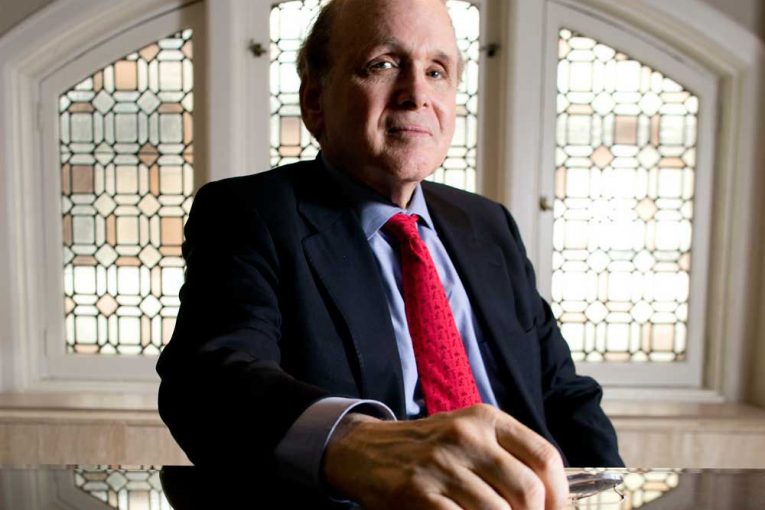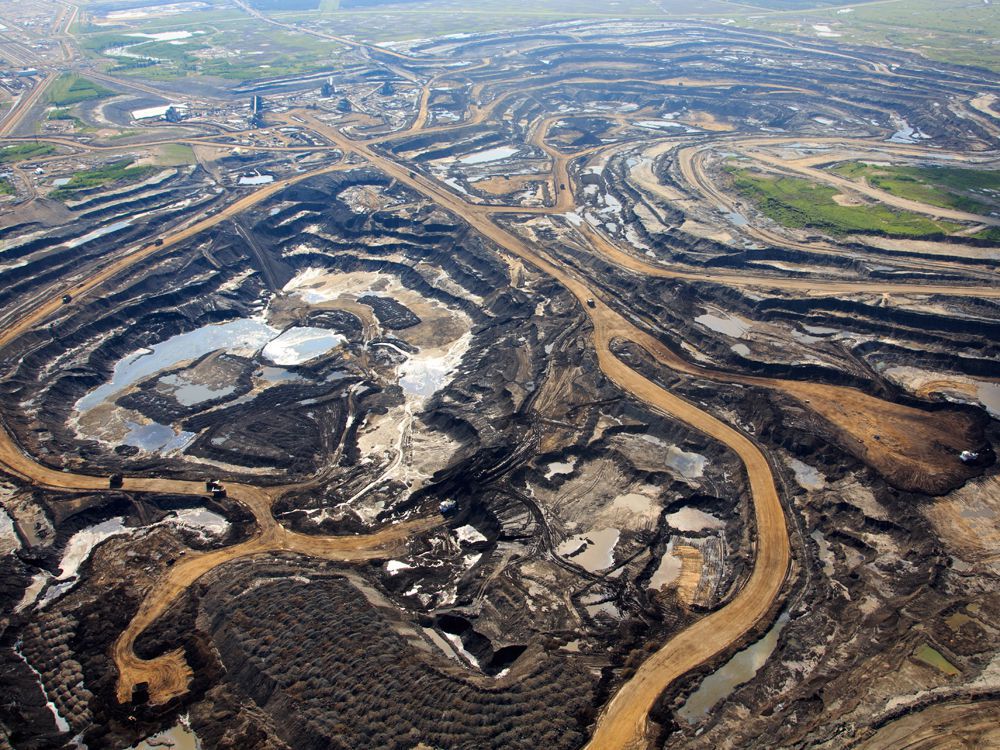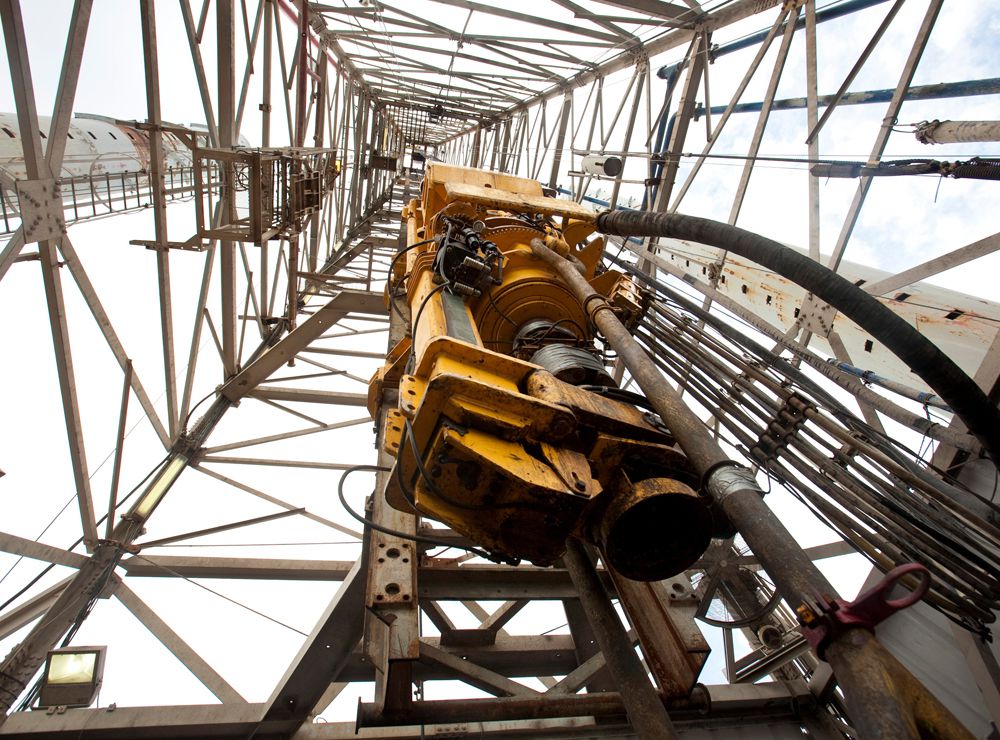
Pulitzer Prize-winning author Daniel Yergin has chronicled the historic sweep of the global energy business and says 2020 vastly disrupted the sector and left companies staring into an abyss last spring.
The pandemic triggered unprecedented energy demand destruction. A clash between OPEC and Russia pushed oil prices to new lows. The energy transition to a low-carbon future sparked predictions that peak oil demand had arrived.
To understand these watershed moments and the outlook for a new year, Herald columnist Chris Varcoe spoke recently with Yergin, vice-chairman of energy consultancy IHS Markit and author of a new book, The New Map: Energy, Climate and the Clash of Nations.
Yergin discussed what imprint 2020 will leave on the sector, the future of Canada’s oilsands, the fate of the Keystone XL pipeline, and key drivers of energy markets in the new year.

The following is a transcript of their conversation, which has been edited for clarity and length.
Q: Looking at 2020 through a historical lens, what will be the significance of this year for the oil and gas industry?
A: It was dealing with a disruption of a kind they’ve never had before, which was a vast disruption … from what is, hopefully, a once-in-a-century pandemic and the shutdowns that required.
Q: What are the long-term ramifications of the disruption?
A: It has certainly speeded up digitalization. And two (other) things: one is in terms of commuting and … business travel.
Every CEO I know is asking the question about when people are going to come back to the office. Will they come back every day? How many will come back?
The other (thing) is the addition of net-zero carbon targets… It’s forced companies to think more deeply about what the future will be like and how different the future will be… The adoption of these (climate) targets of 2050 and net-zero carbon — and then the attitudes of investors and how that has become part of the outlook of many investors — is something all managements are having to deal with.
Q: How do you view the year?
A: What is striking to me is here’s this big complex industry, where suddenly people were working remotely, (which) had to develop whole new ways of working and it’s been a vast disruption in the economy, but there’s been no disruption in the flow of supplies. And the industry has just kept going… Even with all of the shutdowns, demand is down only 10 per cent.
Q: In your new book, you detail the breakdown that took place last spring between the OPEC+ group. Was the price war between OPEC and Russia an accidental miscalculation? Is it a harbinger of more discord ahead?
A: It was the rise of shale that pushed Russia and Saudi Arabia together to create OPEC+. I think (the price war) was a real miscalculation and miscommunication and a failure to understand, to be able to envision the eight-million-barrel-per-day drop in demand in Asia (due to the pandemic) was only a preamble to a 27-million-barrel-per-day drop in the rest of the world…
If there hadn’t been a deal in April, it would have been a much more dire outcome… I
n April, it was the abyss.
We could have been looking at an industry really collapsing…
Even the consuming nations’ leadership got very concerned that if you have a collapse in the industry, what the consequences would be.
In April, it was really the scariest time in a long time for this industry. But the ship got righted before it sunk.
Q: We have seen a new deal from OPEC+ on bringing some additional production back in January. Do you think the coalition will stick together?
A: Events will matter, but I think self-interest is a compelling factor to stay together. But classically, the stress actually increases once prices go up, because at that point, people start thinking more about market share than they do about survival.
Q: Do you think the era of growth is over for Canada’s oilsands?
A: It’s typical to expect incremental growth in oilsands (coming from) a step-out from current projects, expansions and so forth. But I think big greenfield projects are not in the cards. It will be optimizing and expanding existing capacity.
So, we do expect it to continue to grow. But there’s also the question about access to markets, which is the other side of the equation.
Q: What is the role for the oilsands in an era of energy transition?
A: There’s a stereotype that was created around the oilsands, a demonization of the oilsands, that really doesn’t accord with reality. But it has become part of the vocabulary, the political vocabulary of a lot of activists and their allies. And (it’s) failing to recognize that the carbon footprint is coming down, failing to recognize that Canada is a really stringent country, in terms of environmental regulations.
Q: The pipeline chapter in your book begins with the battle over Keystone XL. Do you think that pipeline will get built, given president-elect Joe Biden has promised to kill it?
A: It will be a tougher battle, and it would have to be seen within managing an overall carbon footprint discussion. The case will have to be made and it would have to change a lot of minds — minds that are pre-made up…
Part of it is recasting what Keystone XL is, that this is a different project than the one turned down by the Obama administration.
Q: Given what Biden has said, is that a battle that can still be won for proponents, specifically the Alberta government?
A: I don’t think it’s a lost cause. I think it is very important for Alberta and Canada to continue to make the case about the positives of Keystone XL … but Keystone is just a great symbol and people were chaining themselves to the White House gates over it.
Q: Where do you see oil prices headed in 2021?
A: The oil price has been stuck for some time now in what I’ve just started to call virus alley. At one end of the alley is the virus, and the other end is the vaccine. As we get closer to the vaccine, the markets are sort of anticipating the world after COVID, which will be sometime in late spring or summer, probably.
Then, it’s reasonable to expect (oil) to be in a $50 to $60 world for Brent, rather than where prices have been. Some people think higher than that. But then so much goes back to what happens with GDP.
Of course, even with recovery, there is still going to be an overhang of barrels (that are) off the market … if the Biden administration starts talking to Iran about restoring the nuclear deal, the flip side of that is more Iranian oil coming on to the market.

Q: When will oil demand return to 2019 levels?
A: The end of 2021, 2022.
Q: There is talk about under-investment in the oil industry. Do you see that leading to another period of much higher oil prices or is the era of high oil prices over?
A: In watching the oil market, you learn to never say never because one surprise follows another … With that said, you look at the degree of budget cuts, the caution of companies…. I could see the market tightening, but what I do also see is a big overhang of additional supply. There’s a lot of oil sitting on the bench right now…
I could be wrong, but I don’t see the circumstances (of high oil prices) unless something very dramatic happens, in which you would have a crunch. But I could surely see markets tightening a few years from now.
Q: You say in the book that in the next few decades oil will maintain a pre-eminent position as a global energy commodity. Why do you feel that way with all of the talk of peak oil demand?
A: There are a lot of scenarios for what happens. The view I take in the book is that oil probably peaks around 2030 or the early 2030s… People who think it can happen sooner are probably discounting growth in population and rising incomes in emerging markets.
In all of the talk about energy transition, so much of it loses sight of scale…(People are) just amazed when I tell (them) that 80 per cent of world energy use in 1990 was oil, gas and coal. And in the year 2020, 80 per cent of world energy is oil, gas and coal.
Q: Is a net-zero emissions target by 2050 possible for the oil and gas sector?
A: Everybody is signing on … they’ve signed on to the ‘what.’ But what is not known is the ‘how’… So the ‘how’ is a big question that everybody is wrestling with and carbon capture has to be part of the solution in one form or the other.
Q: What role do you see for natural gas?
A: Natural gas, it’s part of the energy mix. We think LNG will continue to grow at an average of about three per cent a year for the next 20 years, because there’s a real demand for it for electricity. It enables countries to have a different profile to their electricity generation that they don’t have with wind and solar.
We talk about a shale revolution. Clearly, there has been a solar revolution and the plummeting of solar costs is extraordinary … so solar and wind will come to play an increasingly large role, but gas will play a large role, too.
Q: What will you be watching for in 2021 as it relates to the oil and gas sector?
A: The speed of vaccinations, the pace of GDP recovery and what happens with the Biden administration and Iran in terms of restoring and trying to restore participation in the nuclear deal… The Biden administration has made climate one of its four priorities and how they seek to implement that will be significant.
You can read more of the news on source
